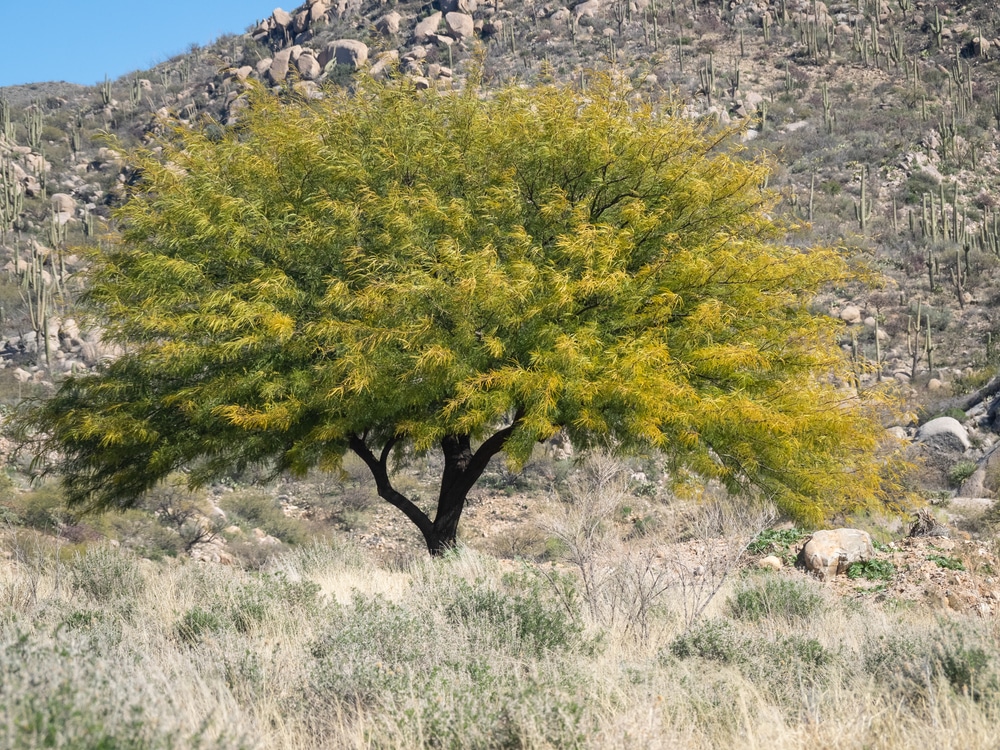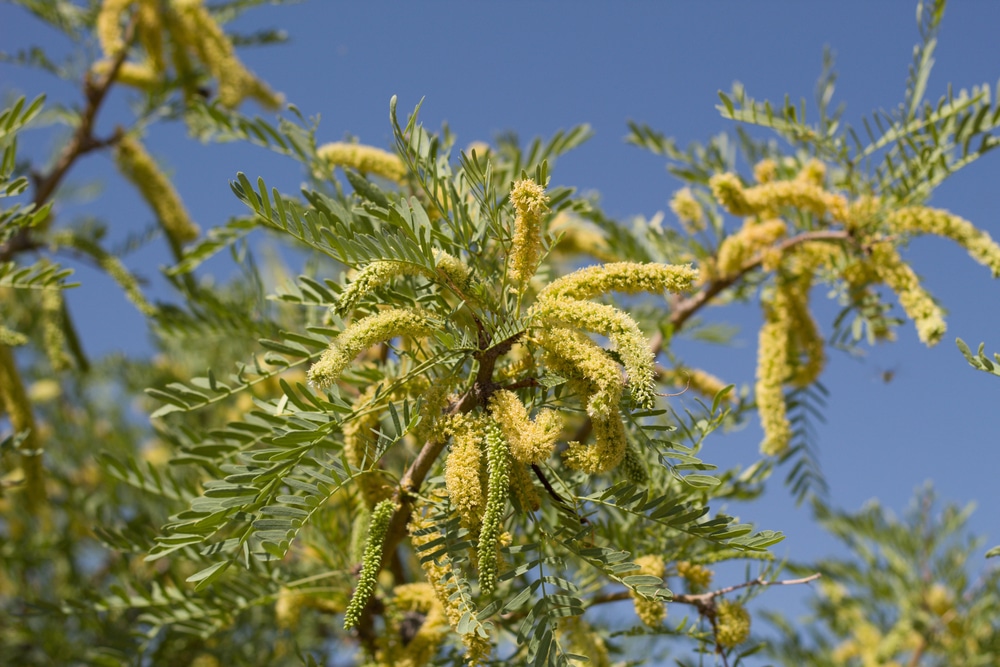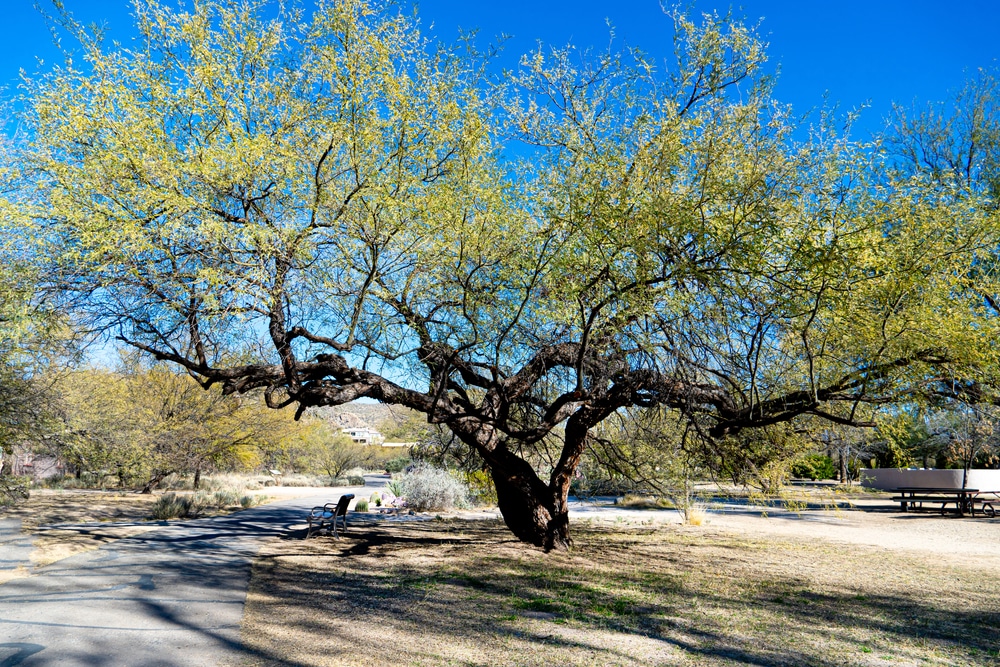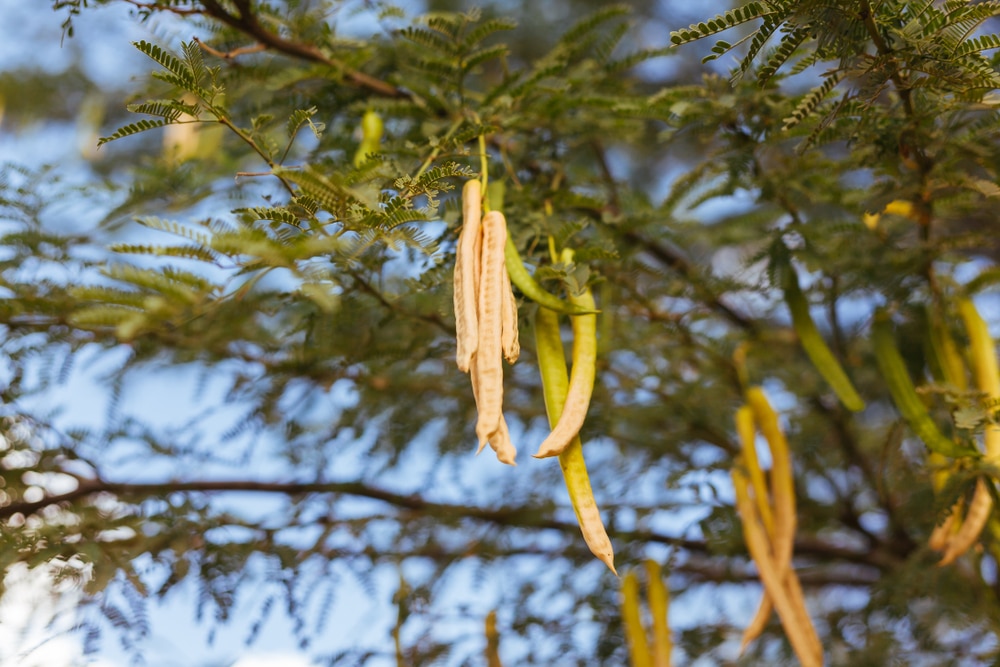There are over 40 mesquite trees in the world. Of these, Arizona has three native species. Most other mesquite species are from South America.
Read on to learn about mesquite trees’ features and the types best for Arizona landscaping.
Do Mesquite Trees Grow Well in Arizona?

Three types of mesquite trees grow well and are native to Arizona—honey, velvet, and screwbean mesquites.
That said, it’s possible to encounter other mesquite varieties from Chile and Argentina in the southern parts of Arizona. Examples include:
- Black mesquites
- Chilean mesquites
- Argentine mesquites
Mesquite trees growing in Arizona vary in size. A portion of this depends on the species, while some of it concerns soil quality. Mesquites grow taller in deeper soil with good irrigation.
Popular Native Mesquite Tree Varieties for Arizona
Below is an overview of the three most popular types of native mesquite trees you’ll encounter growing in Arizona.
Honey Mesquite
The honey mesquite grows as a tree or shrub, ranging from 30 to 50 feet tall. It contains sharp thorns growing up to two inches long, although they’re often the pointiest on new twigs.
A honey mesquite’s leaves have a feathery appearance with bright green leaves that fall off in the winter. They produce yellowish-green flowers that don’t stand out from the plant due to their small size. But their strong aroma makes it pleasant to pass by them when they’re in bloom from April to August.
Animals, including livestock, love the sweet taste of the Honey mesquite’s pods. However, because this is how the plant reproduces, many farmers actively work to remove this tree that they view as a weed.
Traditionally, Native Americans in Arizona used the honey mesquite’s sweet pods to make cakes and other food. The tree’s massive taproots also make excellent firewood.
Velvet Mesquite
The velvet mesquite is a prolific tree in Arizona, where some people claim it’s why the state has such delicious honey from bees pollinating it. As with honey mesquites, indigenous people in Arizona used this tree’s starch for preparing food.
You can even eat velvet mesquite flowers, which are sometimes traditionally used to treat the cold or flu. The velvet mesquite gives food a distinct, attractive flavor when cooking with its wood on the grill. The root bark is also helpful for killing intestinal parasites and healing conjunctivitis.
Velvet mesquites thrive in Arizona because they require little water and like climates with little humidity. They love the heat, but they’re hardy when the desert drops to as low as 10 degrees Fahrenheit.
The more irrigation the velvet mesquite receives, the less it can tolerate colder temperatures. Most people prefer to prune Velvet mesquites to keep their growth in check, although doing so in the springtime will have the opposite effect and spark it.
Screwbean Mesquite
Screwbeans are yet another mesquite tree native to Arizona and the southwest area of the United States. These trees thrive in desert climates and have an excellent tolerance for saline soil.
Although screwbean and honey mesquites have similar appearances, you can decipher them based on the screwbean’s twisted seedpods. The screw-like shape these pods have is why the tree gets its name.
Screwbean mesquites also err on the shorter side for being a mesquite tree, averaging 10 to 33 feet tall. They produce yellow flowers in the spring and winter, although they lose their leaves and become dormant in the winter.
Caring for screwbean mesquites is a breeze, given that they thrive in full sun and require little watering. They can also tolerate temperatures as low as 15 degrees Fahrenheit.
Is a Mesquite Tree the Right Fit for You?
Not all Arizona homeowners view mesquite trees as ornamental plants. But they can be a decent choice if you’re looking for a hardy, native tree.
Keeping mesquite trees pruned is crucial to help them maintain an attractive shape and prevent them from taking over your lawn. You can also dip your toes into using this plant for its food and medicinal properties.
You may also be interested in finding out which varieties of palm trees are native to Arizona.


